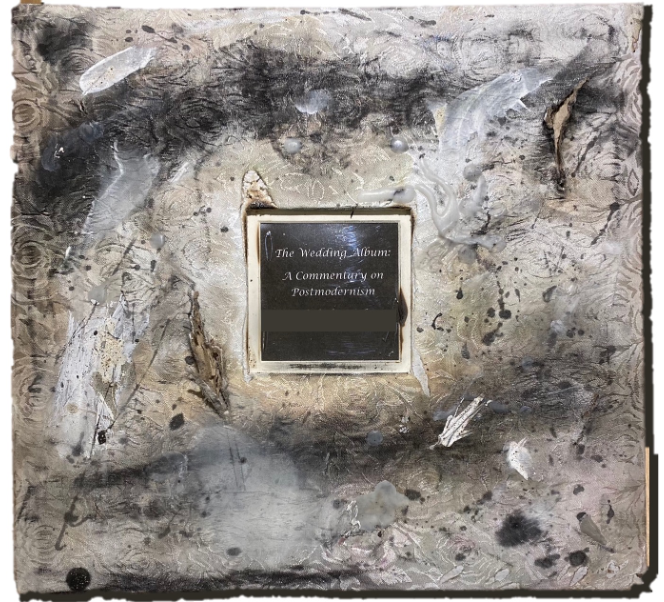
Teaching Religion by the Book: Bookbinding as a Metaphor for Learning
Sometimes teaching strategies that seem newly discovered have been with you all along.
When I was in the last stages of writing up my doctoral dissertation, I had just moved to the Canadian Maritimes. I was living on the outskirts of a small village in an old and drafty brick house overlooking glistening tidal mudflats. Beautiful but isolated and with no distractions, all that stood between me my PhD was a completed thesis.
With this knowledge, I set about pursuing a whole variety of unrelated activities: I learnt to bake bread; I split 8 cords of firewood; I shoveled more snow than I had ever seen from the driveway; and I refinished, with great care, several nondescript pieces of old furniture. I also spent time creating hand-bound books. Twenty years on, while my circumstances have changed considerably, bookmaking has proven to be more than a mere distraction. Indeed, bookmaking has formed an enduring connection to my academic work and has shaped my teaching practice.
It seems those early days of making books were prescient, in that over the years my academic interests have become increasingly concerned with biblical reception. I am fascinated by the ways sacred texts are continually being created and recreated, unbound and repackaged, unfurled and gathered up. Bookbinding manifests an applied, even somatic, example of these textual journeys. In a world of e-books and hypertext, one might consider bookbinding a quaint if not archaic practice, but that would overlook it as a very practical way of participating in the text. It involves doing something that actively shapes and changes the text. As the binder works the pages with their hands, the text literally takes on characteristics of changeability, pliability, and plasticity.
Understanding textuality more broadly prompted me to consider the ways the biblical text functions, not only within the parameters of, say, John’s Gospel or the letters of Paul, but also as these narratives course their way through various points of reception within our cultural context. We read texts, we live texts, and we bind these texts into our experience as they trace paths through the familiar stories of our times. The ancient art of bookmaking offers a way of marking this capacity of the text to exceed the covers of the “Good Book” and extend its influence, traveling beyond its origins in unanticipated ways. This is a path of beauty, of craft and skill. It is a way of marking a journey that acknowledges a past and opens to a future. It also asks us to consider our relationship with the text. As the book accompanies us, where do we end and where does the text begin? Is the text passive or does it act upon us? Alternatively, are we the passive recipient, or the active shaper of the text? Are we a part of the text, our stories, contexts, interpretative reference points? In dealing with the Bible, it is not just about discovering a book, it is also about continuing to make and remake this book, to bind it up with our experience and to consider the future possibilities of both.
What happens, then, when I ask my students to create books as part of their learning? When setting one alongside the other, how will the physicality of the book impact and direct their intellectual journey? Will the materiality of the book work to ground and open up the nonmaterial insights we often privilege in higher education? Making books is not just something fun to do, it is a way of using the material to open up the nonmaterial, and exploring the connections between reader and text.
Just a few years ago, as part of my regular teaching of our department’s theory and methods course, I asked students to use portfolios to track their learning. The subject matter of this course tends towards abstract ideas, technical definitions, and counter-intuitive perspectives on the study of religion, and sometimes the “translation” of this learning into future courses is not as successful as I would like. My hope was that the practice of making a book would help condition and ground the course materials by adding a physical dimension to the learning experience, one that would connect learner and learning in transformative ways. In their portfolios, students were asked to create a book that gathered together concrete evidence demonstrating the development of their understanding, their acquisition of key skills, and the building of scholarly perspective. I chose learning portfolios because their flexible, evidence-based process allows for individual curation and creativity: they are an ideal venue for self-reflective learning. 
In one particularly memorable example, a student submitted a portfolio in the form of a soiled, slashed, and scorched wedding album—she had clearly used a sharp blade and set it on fire. The portfolio focused on the theme of post-modernism and religion and while the content was excellent, the form of the book itself gave expression to the ambivalence the student felt towards this particular theme, the threat it posed for “traditional values,” and the sense of loss it implied for established cultural practices. The covers of her album spoke of the struggle and the challenge of learning and the feelings of disillusionment that can sometimes accompany understanding and insight—particularly for a student of faith within a secular university context. Needless to say, the album brought to mind my own experience in that old house on the hill with this example of a student binding together a rich range of perspectives about who they were and what they were studying and grounding their learning journey in the familiar materiality of a book. Expressed in this album were sentiments that may not have been communicated via a traditional paper but were unmistakable as part of the material context for her work. The physical book provided a means for her to bind her learning journey, her experience, and her identity into a space that was richly layered and uniquely hers.
Leave a Reply